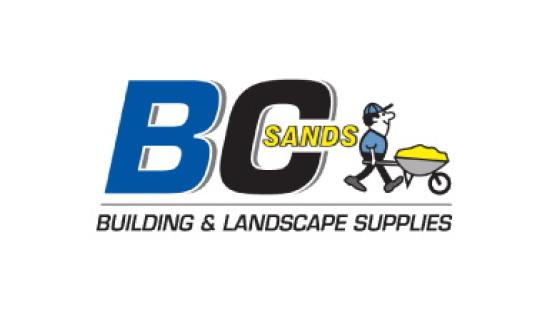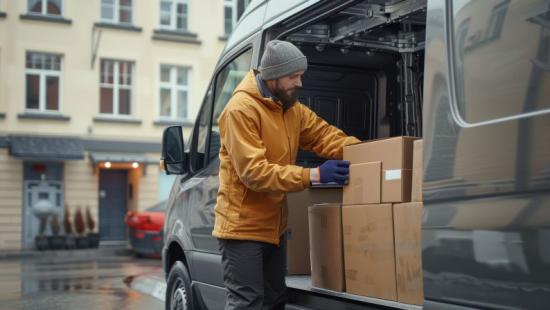Best Practices for Optimizing Last Mile Delivery
Organizations with last mile delivery operations are faced with an increasingly competitive marketplace. They are constantly challenged by customer demands, driver shortages, and adverse economic conditions.
These and other circumstances dictate that companies diligently manage their distribution operations considering all elements including delivery service offerings, customer experience, fleet productivity, costs and driver/vehicle performance.
To effectively control distribution costs and provide exceptional service to customers, each company should evaluate the many last mile delivery best practices that have recently emerged. These best practices are designed to streamline and better manage the delivery process, establish and maintain a competitive advantage, and generate new and repeat business.
While best practices will differ between organizations and markets, there are a number of approaches that apply to any business with delivery operations. The eBook “Home and Last Mile Delivery Best Practices” provides an overview of the Top 10 best practices for establishing, managing, and measuring effective last mile delivery operations. It also establishes a framework for sustained performance and continuous improvement.

Steps to Transform Last Mile Delivery Operations
1. Put an audacious plan in place
Last mile delivery strategies, tactics, and technologies have evolved significantly in recent years. What was best in class five years ago is now considered expected capabilities. World-class last mile delivery operations do more than just deliver goods reliably; they are contributors to competitive differentiation and revenue for their organizations.
Developing an audacious plan starts with an external assessment. Three questions will start the plan in the right direction.
What can delivery do to enhance the value of the customer’s business? What is the competition doing with delivery that is causing us problems? How are other industries using last mile delivery to be more competitive?
From there, more traditional operational plans for improved productivity and better customer service can be interwoven with the “game-changing” initiatives to transform last mile delivery operations.
2. Technology makes a significant impact
Most of today’s leading last mile delivery strategies are only made possible with advanced route planning and execution, mobile, telematics, and data analytics technologies. From the start of the buying process to post-delivery, advanced last mile delivery solutions have the power to change the customer experience, generate incremental revenue, and reduce delivery costs.
Not only do these advanced capabilities make a difference, but the information generated is equally important for improving distribution operations and the customer experience.
3. Use analytics to gain deep operational and customer insights
Last mile delivery solutions are generators of lots of valuable information and when combined with the advances in analytics technology, they provide wider and deeper perspectives about the business. Analytics can help with today’s operations to spot trends, so adjustments can be made before problems actually take place or become severe.
It can also look over a wide horizon and at great detail to find opportunities to improve the performance of the entire operation or down to an individual customer or driver.
4. Get the right metrics in place
Too often, the value of a last mile delivery operation gets minimized because they are measured with traditional logistics measurements such as cost and on-time-in-full. Leading last mile delivery operations include metrics that go beyond the delivery operations including revenue contribution, voice of customer, and competitive differentiation.
These metrics capture the true impact of superior delivery performance and capability. Getting the folks who own the customer to participate in these metrics is essential to implementing the audacious plans used by today’s world-class distributors and retailers.
5. Standardize and automate
There are two important points to understand when it comes to planning best practices and technology.
- There is a great disparity in planner competency and last mile delivery route optimization technology cannot overcome a bad planner.
- Planning is not an art, it is a science and the value of a planner is not to build a route from scratch, but to focus on exceptions and continuous improvement.
To make every planner as competent as the best planner, planning needs to be standardized and automated. The first step is to determine the steps that the best planners use to process and optimize the data.
This is traditionally a multi-step process. Second, advanced planning solutions have the ability to automate the planning and optimization process using technologies like robotic process automation that can execute this multi-step process applying complex filter, transforming and optimizing process without human intervention.
This way, the results across all planners become more consistent, higher quality, and more productive.
SOLUTION HIGHLIGHT
Appointment Scheduling
Create a highly differentiated customer experience with the industry’s most advanced dynamic delivery and service appointment booking solution.
6. Enable the driver
When it comes to execution, the driver is the most important element of the process. However, drivers like planners have a wide degree of performance variability.
The best drivers stick to the route plan, keep their delivery stop time to a minimum, and immediately communicate when the route is not going to plan. A combination of tracking, alerting, in route information, and post-route coaching can enable every driver to be the best driver.
Using real-time GPS tracking and intelligent dispatching solutions, managers can understand when drivers veer from the plan and correct the driver or address the issue on the ride. Mobile apps can help drivers to keep to the route and delivery times on track and provide route productivity in real-time.
Analytics helps during the debriefing process to show the driver where there are performance deviations and compare their performance to their peers. Because drivers supply much of the data during the execution of the route, leading delivery operations also grade drivers on their ability to accurately and timely capture delivery data.
7. Manage the customer
Customer behavior is also a critical factor in delivery performance. From receiving delays to long unloading times or unavailability, customers impact delivery success. As stated earlier, measuring customer behavior and regularly review their performance is a critical part of a customer engagement process.
However, there are proactive methods to make sure the customer is prepared to receive delivery. Leading delivery operations even provide incentive programs for customers who consistently meet delivery requirements or help to reduce delivery times.
SMS or email reminders help customers to prepare in advance, while real-time order tracking notifications ensure that the customer is on site at the right time. Tracking the driver’s ETA on a map adds another layer of certainty.
In addition, delivery information can be provided to ensure gates are unlocked, the right dock is available or a load for pick up is staged. This proactive approach is a “win-win” for the customer and last mile delivery operation. Customers don’t need to wait all day for a delivery, while businesses benefit from fewer failed deliveries and reduced “Where’s my order?” calls.
8. Steer customers to optimal delivery times
Last mile delivery operations are too often the victim of bad delivery appointment scheduling processes. Whether it is during the sale or some static delivery policy, delivery times that are promised are either infeasible or unnecessarily expensive.
By using dynamic delivery promising during the buying process, companies can choose which delivery options they want to present to customers to ensure they are feasible and the lowest cost. There are many steering approaches that can be applied such as dynamic pricing, eco-delivery options, etc.
9. Expect the unexpected
Exceptions such as bad weather, traffic jams, and other unexpected delays are all contributing factors when it comes to on-time delivery. Since even the best made plans can fail, contingencies must be established, and delivery organizations must have real-time visibility into exceptions immediately when they occur.
With a high degree of visibility into delivery operations through the use of real-time GPS, predictive ETAs and real-time traffic, dispatchers can proactively – even automatically, respond to service disruptions or delays, and immediately adjust a driver’s schedule accordingly. Automated delivery notifications can proactively reach down-stream customers to advise them of the delay or even allow them to reschedule the delivery.
10. Establish a competency team
Every last mile delivery operation that implements a new solution goes through a learning process and realizes that they can do more with the solution they have and that their best practices are evolving. Typically, the project team manages this effort, but what happens when the team is disbanded?
In addition, last mile delivery solution capabilities are always advancing, but who keeps track of the advancements? This is why a team of superusers needs to be created to take the constant learnings and ensure that they get disseminated across the organization and evaluate how new solution releases can benefit the delivery organization.
The continuous improvement cycle created by the competency team will make sure that the solution is tuned for optimal performance and improve delivery productivity and the customer experience. Equally important, they will help make new solution users quickly become effective.
Conclusion
Now that you've read this article, you know which 10 steps are essential to transforming your last mile delivery operations. For over 30 years, Descartes has been helping distribution companies around the globe overcome their challenges and enhance performance with leading last mile routing, mobile, and telematics technology.
Want to find out more? Read our whitepaper, "Best Practices for Last Mile Delivery".
Fleet Resource Center
Discover Tutorials, Success Stories, Thought Leadership, and More to
Deepen Your Routing, Mobile, and Telematics Expertise.
Recommended For You



